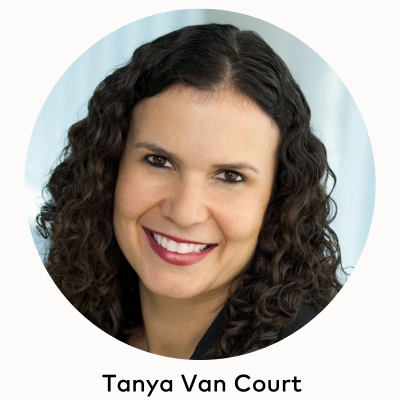Financial Freedom 101: This bootcamp taught students to take control of their finances
April 2, 2025 | By Christine Gibson
Tanya Van Court was about to learn a lesson that would change her life. In 2001, after earning her master’s in industrial engineering from Stanford University, Van Court was vice president at a broadband internet provider in Silicon Valley. In her time at the company, she had watched as the value of her stock options soared to $1 million. Then the tech bubble burst. Her holdings lost 98% of their market price in one day.
“I thought, ‘Tanya, that was a fatal mistake,’” she recalls. “But I didn't know if there was anything I could have done differently, because I hadn’t been taught the basics of personal finance.”

What she did know was that she never wanted this to happen again, not to her or anyone else. That’s what inspired Van Court to create Goalsetter, a family finance app that puts education first. Goalsetter, a veteran of Mastercard’s Start Path startup engagement program, allows parents to schedule allowance payments, which kids can save, invest or spend via a Mastercard debit card. The app also offers interactive content — such as videos, memes and games — designed to make learning about money fun.
Yet in recent years, Van Court has grown concerned about another group: college students, standing on the precipice of careers, salaries and adult responsibilities. And as a Black woman, Van Court was particularly worried about Black graduates, who must navigate systemic economic barriers (for every $100 of wealth held by white families, black families have only $15) while also disproportionately saddled with student loan debt — four years after graduation, Black students owe an average of 188% more than white students.

At Mastercard, Dawn Boudwin, a director on the Community and Belonging team, was thinking about the same challenges, but from the opposite direction — she knew some of Mastercard’s customers wanted to boost financial literacy among college students to put them on the path to financial health but struggled to find the right approach.
So she reached out to Van Court to create the Financial Freedom Project, a virtual money management boot camp for college students. Because of Mastercard’s strong relationships with Atlanta-area Historically Black Colleges and Universities, they chose Spelman and Morehouse Colleges and Clark Atlanta University for the pilot. In a series of online classes, Van Court and her team taught 88 students how take control of their finances and achieve their long-term goals.
“Wherever you get your degree, you should leave school prepared for real life, and basic financial education can help set everyone up for success,” Boudwin says. “We heard anecdotally on campuses, ‘We don’t even know where to find this type of information.’ There was an appetite for it, and it wasn’t being met.”
The uphill journey to financial literacy
Today, students using Goalsetter’s educational platform achieve, on average, an 83% mastery of financial concepts. “By the time these kids are out of their parents’ houses, they are truly ready for the world,” she says.
But how ready is the typical college student? To find out, last year Goalsetter administered a 12th-grade-level financial quiz to students at Stanford, Harvard, University of Pennsylvania, Spelman, Morehouse and Clark Atlanta University. At each school, the average score hovered around 50%.
The results reminded Van Court of her own hard road to financial literacy. “They're getting prestigious degrees, but if you don't come out of college knowing exactly what to do with your first paycheck, you're already behind,” she says. “The right instruction can give students at these institutions a shot at developing generational wealth. You can’t live the dream if you don’t speak the language.”
Changing the game
Fortunately, higher education has been shown to bolster financial resilience for graduates: About 30% of students at HBCUs move up at least two income quintiles from their parents by age 30 — nearly double that of students at other colleges and universities. Van Court wondered whether additional financial education could multiply that impact. And, if so, which behavioral nudges would motivate them most?
Thus, the bootcamp was born. Using content adapted from the Goalsetter curriculum, Van Court and her team led the students through ten Zoom workshops, devoting each half-hour session to a different core concept, such as investing, debt management and retirement planning. They also offered on-demand access to recordings of the classes on their website.
By the end of the bootcamp, the participants had improved their financial literacy scores by an average of 29.4%. Their confidence improved in step: 73% reported feeling comfortable making investments through an app, compared to 32% before the course began. The results also showed a similar positive shift in confidence around choosing a savings product — 49% pre-survey compared to 85% post-survey.
These findings can help Mastercard’s customers inform and evolve their financial literacy programs and enable the integration of Goalsetter and its white-label app, Boudwin says, as well as strengthen the company’s own on-campus financial literacy efforts through its Master Your Card initiative. “We can really tailor how we’re showing up to make sure we’re giving students the information they really need, to have the greatest impact on their financial management behaviors.”
Now Van Court wants schools around the country to draw inspiration from these results to prevent financial literacy from getting lost in the shuffle of lab reports and term papers.